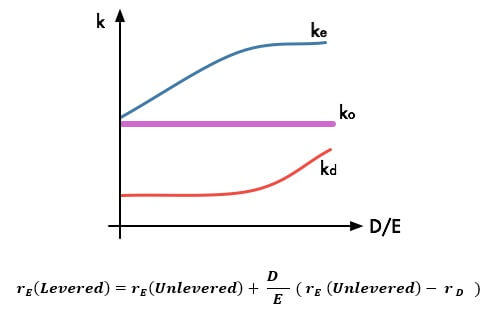MM Model Assignment Help
MM Model is related to the formation of a convenient capital structure for the company which will yield the firm maximum returns and lower the cost of capital to the firm. This model was given by Modigliani and Miller. This theory forms the basis for the modern theories of capital structure.
This theory was formulated in 1958 by F. Modigliani and M. Miller. they published many papers discussing the issues of the theorem. The theorem is based on driving comparisons between two identical firms in size but having different capital structures. One of these firms is taken to be a levered firm i.e. having a component of debt in it and another one is Unlevered firm. This model was formulated on an assumption of tax free world. The Modigliani-Miller theorem stated that despite the fact they were different in the form of their capital structures but still they were of same value.
Modigliani and Miller put forward various propositions which discussed the MM Model and laid down the basics for further research.
The assumptions for the theory were:
- There are perfect Capital Markets.
- The investors have same expectations of firm's net operating income.
- Business risk is equal among all the firms.
- The dividend payout ratio is 100%.
- There are no taxes.
- There is no transaction cost.
- all agents have same information.
- The agents are the price takers.
These assumptions laid down the basis for the Capital structure theory of Modigliani-Miller Model. The Theory proposed two propositions.
Proposition I
{`
The Proposition I stated that the Value of an Unlevered firm = Value of a Lever Firm.
VU = VL
where,
VU stands for Unlevered Firm and
VL stands for Levered Firm.
Value means the cost of buying that company or firm.
The proposition states that buying any of the firm will cost the same.
`}
For example, if we buy firm U which does not have any leverage i.e. debt and buy another one which is a levered firm i.e. with debt. Both the firms will cost the same to the investor. The investor can purchase shares of firm U and borrow the same amount of money as L does. The returns from both the firms will be the same which means that the price of L will be same as the price of U minus the money borrowed by U, which is the value of L's Debt.
This is solely based on the assumptions of the model that the investor's cost of borrowing is same that of the firm.
Proposition II
MM Model Assignment Help By Online Tutoring and Guided Sessions from AssignmentHelp.Net

{`
here
rE is the required rate of return on equity, or cost of equity.
rD is the required rate of return on borrowings, or cost of debt.
D/E is the debt-to-equity ratio.
`}
A higher debt-to-equity ratio leads to a higher required return on equity, because of the higher risk involved for equity-holders in a company with debt. The formula is derived from the theory of weighted average cost of capital (WACC).
These propositions are true under the following assumptions:
- no transaction costs exist, and
- individuals and corporations borrow at the same rates.
These studies do suffer from some defects but still are considered in study and taught to children because they teach several optimal ways of forming the capital structure.
MM Model with Taxes:
The above propositions discuss the Model with assumptions of tax-free environment. But in the practical world Tax plays an important role.
Thus the model has been explained taking in effect the tax rates:
Proposition I
VL = VU + TC D
{`
where
VL is the value of a levered firm.
VU is the value of an unlevered firm.
TC D is the tax rate (TC) x the value of debt (D)
the term TC D assumes debt is perpetual
`}
This means that there are advantages for firms to be levered, since corporations can deduct interest payments. Therefore, leverage lowers tax payments. Dividend payments are non-deductible.
Wish to learn more about the MM Model with taxes? Visit assignmenthelp.net now and learn more.
Proposition II
{`
where:
rE = r0 + D/E (r0 - rD )(1-TC)
rE is the required rate of return on equity, or cost of levered equity = unlevered equity + financing premium.
r0 is the company cost of equity capital with no leverage (unlevered cost of equity, or return on assets with D/E = 0).
rD is the required rate of return on borrowings, or cost of debt.
D/E is the debt-to-equity ratio.
TC is the tax rate.
`}
The following assumptions are made in the propositions with taxes:
- corporations are taxed at the rate on earnings after interest,
- no transaction costs exist, and
- individuals and corporations borrow at the same rate.
Wish to learn more about the marketing strategies? What are you waiting for? Log on to assignmenthelp.net now and get all your problems solved. We know how important it is for you to score good. We help you in formation of best assignments to get good marks. You can just upload your assignment, homework online and set the deadline. We will deliver your assignment before the deadline. You can also chat with our executives who are available online and will help in tackling an issue you have. In case you have queries or doubts related to your subject the you can take online coaching as well from the best teachers we have who have professional experience in their respective fields. We guarantee the solution to all your problems. We are available 24*7 for you. What distinct us from others is our dedicated and good work. We will provide best services and you will be 100% satisfied with our services.
So what are you waiting for Visit assignmenthelp.net now and avail best experiences.


